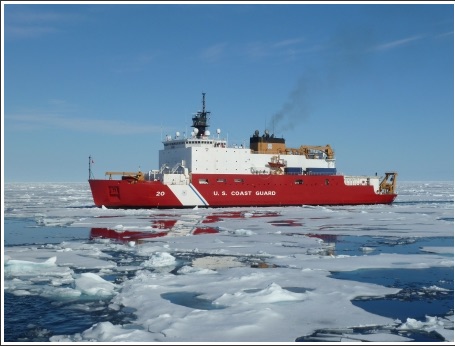The preparations for July's departure continue, and I am amazed at the level of planning that goes into this type of science mission. Plans must be made and coordinated to get all of the special equipment onto the Healy as well as all of the team members to Seward in time for departure. Cargo sizes and weights, deliveries, storage, and loading must all be worked out to make the science of the mission happen. I am reminded of packing for vacation and all of the lists I used to make for a week at the beach. The lists for six weeks of research in the Chukchi Sea must be enormous!

I am also using this time to learn more about the ship we will be on - the USCGC Healy. Built in 1999, Healy is 128 meters long and 25 meters wide, and can break through 1.4 meters of ice at a speed of 3 knots, and 2.44 meters of ice when backing and ramming. Healy can serve many purposes, including research, search and rescue, escorting ships, and other jobs that the US Coast Guard might need to accomplish. I think this is pretty impressive, and I'm looking forward to sailing on the Healy and to meeting the men and women of the US Coast Guard who keep this ship sailing!
All information describing the Healy was obtained from the USCG Icebreakers Science Operations Page found at http://icefloe.net/specs-layout#third.
Question of the Day
Although scientific measurements are collected using the metric system, it is sometimes difficult to make a mental comparison based on metric units. What is Healy's length in feet? What is Healy's breadth (width) in feet? What thickness of ice, in feet, is Healy capable of breaking through?


Comments